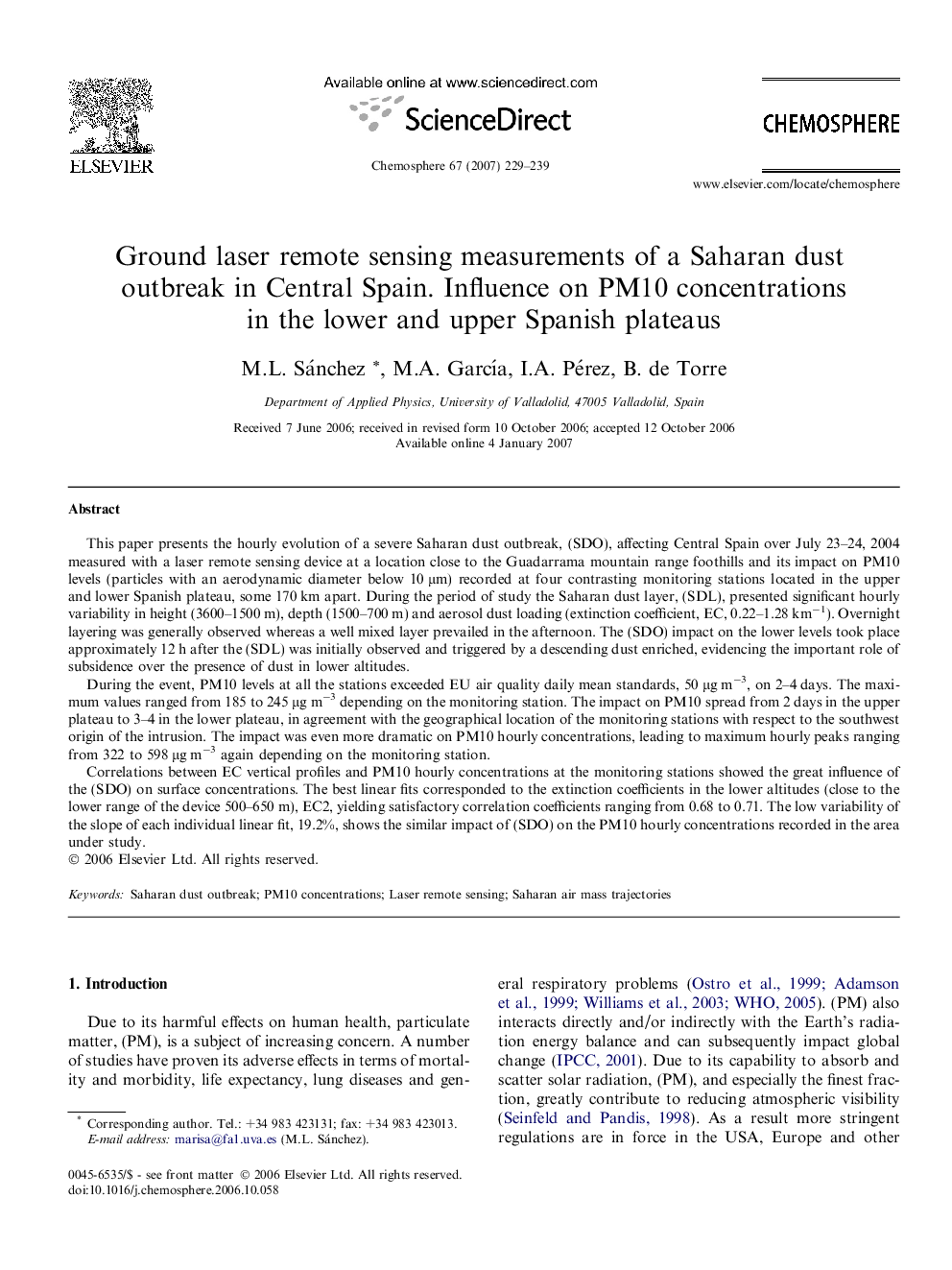| Article ID | Journal | Published Year | Pages | File Type |
|---|---|---|---|---|
| 4415614 | Chemosphere | 2007 | 11 Pages |
This paper presents the hourly evolution of a severe Saharan dust outbreak, (SDO), affecting Central Spain over July 23–24, 2004 measured with a laser remote sensing device at a location close to the Guadarrama mountain range foothills and its impact on PM10 levels (particles with an aerodynamic diameter below 10 μm) recorded at four contrasting monitoring stations located in the upper and lower Spanish plateau, some 170 km apart. During the period of study the Saharan dust layer, (SDL), presented significant hourly variability in height (3600–1500 m), depth (1500–700 m) and aerosol dust loading (extinction coefficient, EC, 0.22–1.28 km−1). Overnight layering was generally observed whereas a well mixed layer prevailed in the afternoon. The (SDO) impact on the lower levels took place approximately 12 h after the (SDL) was initially observed and triggered by a descending dust enriched, evidencing the important role of subsidence over the presence of dust in lower altitudes.During the event, PM10 levels at all the stations exceeded EU air quality daily mean standards, 50 μg m−3, on 2–4 days. The maximum values ranged from 185 to 245 μg m−3 depending on the monitoring station. The impact on PM10 spread from 2 days in the upper plateau to 3–4 in the lower plateau, in agreement with the geographical location of the monitoring stations with respect to the southwest origin of the intrusion. The impact was even more dramatic on PM10 hourly concentrations, leading to maximum hourly peaks ranging from 322 to 598 μg m−3 again depending on the monitoring station.Correlations between EC vertical profiles and PM10 hourly concentrations at the monitoring stations showed the great influence of the (SDO) on surface concentrations. The best linear fits corresponded to the extinction coefficients in the lower altitudes (close to the lower range of the device 500–650 m), EC2, yielding satisfactory correlation coefficients ranging from 0.68 to 0.71. The low variability of the slope of each individual linear fit, 19.2%, shows the similar impact of (SDO) on the PM10 hourly concentrations recorded in the area under study.
